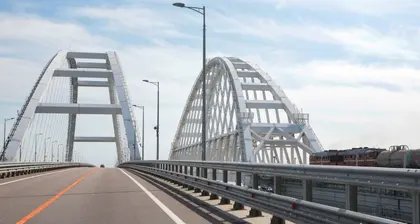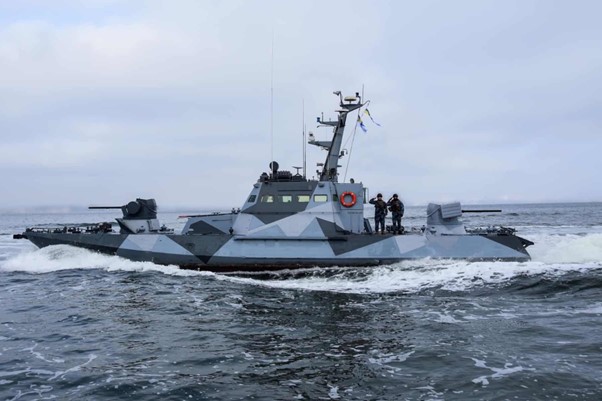According to recent reports in The Independent, Russia has ceased using the Crimean Bridge across the Kerch Strait to transport military supplies to its front-line troops. Instead, it has opted for overland routes passing through the occupied eastern regions of Ukraine.
Satellite imagery provided by Maxar was analyzed by the Ukrainian OSINT agency Molfar, which showed that between February and April 2024, no freight trains carrying military equipment were observed on the railway section of the Kerch Bridge, which connects the Russian mainland to annexed Crimea.
JOIN US ON TELEGRAM
Follow our coverage of the war on the @Kyivpost_official.
The only exception to this was on Feb. 29 when a freight train consisting of 55 fuel tanks was spotted on the bridge.
The decrease in traffic on the Crimean Bridge renders it less vulnerable to attacks by the Ukrainian armed forces, according to Molfar analysts.
This reduction in use began after July 17, 2023, following an attack by Ukrainian surface drones that caused several spans of the bridge to collapse, as reported by analysts.
So far, Ukraine has conducted two successful strikes on the Kerch Bridge that serves as a logistic lifeline between occupied Crimea and Russia’s mainland.
The first attack took place on Oct. 8, 2022, a day after Russian President Vladimir Putin’s 70th birthday, which set the bridge on fire. A truck loaded with explosives detonated on the bridge, damaging several spans.

Massive SBU and SSO Drone Strikes Hit Ryazan Oil Refinery, Triggering Fires and Airport Closures in Russia
According to SBU Head Vasyl Malyuk, hexane – RDX-based explosives – was used in the first attack.“So-called improvised explosive devices were used, and the hexane mixture amounts to roughly 15 tons, which is roughly 21 tons in TNT equivalent,” he said.
This statement was contradicted by Russia in a report earlier this week that said forensic analysis had shown that potassium or sodium perchlorate based rocket fuel mixed with finely dispersed metal had made up the main explosive charge.
The second attack took place in July this year using unmanned surface vehicles (USVs, commonly known as sea drones), which damaged the structural integrity of the bridge and led to the collapse of certain bridge sections.
“We hit the bridge for the second time on July 17 this year using the ‘Sea Baby’ naval drones,” Malyuk said.
The second attack was a joint operation between the SBU and the Ukrainian Navy, where the SBU collected intelligence on the bridge itself, including the technical documents that specified the materials used to construct the bridge.
The success of the attack has led to some speculation that another factor that has resulted in the reduction of the movement of military materiel is that the affected parts of the bridge are no longer able to support the weights involved.
Both attacks halted traffic on the bridge for repair works. Russian authorities have initiated criminal investigations into both incidents, with the SBU claiming responsibility for organizing the attacks.
Earlier in April, The Guardian reported, citing sources within the Ukrainian special services, that Ukraine's Main Intelligence Directorate of the Ministry of Defense (HUR) is planning another attack on the Crimean Bridge in the first half of 2024.
You can also highlight the text and press Ctrl + Enter










